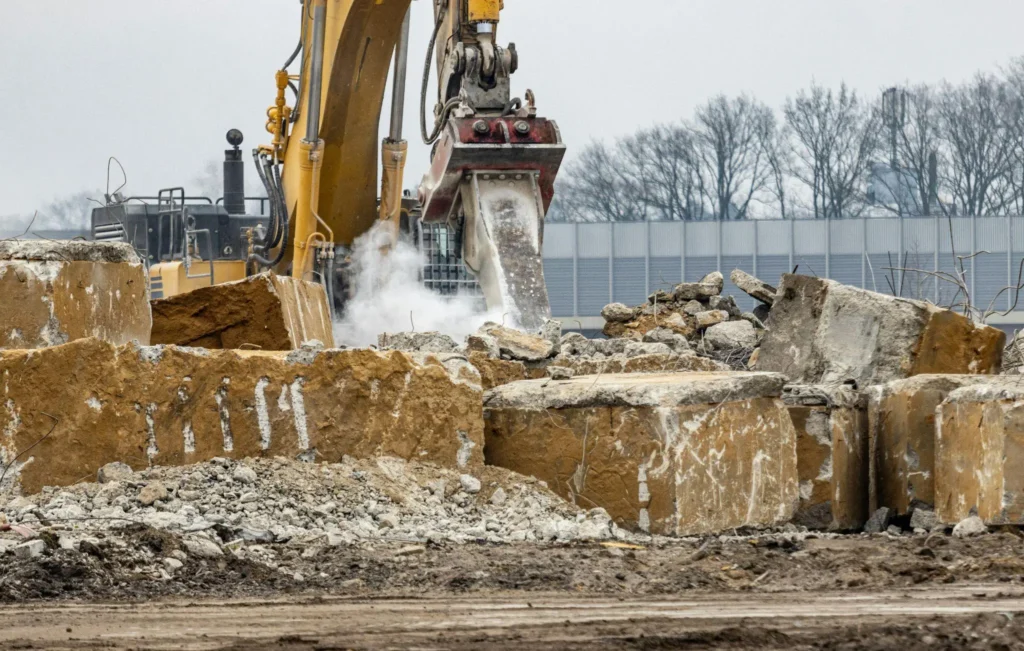Breaking projects can be some of the most challenging tasks in construction or landscaping. Whether tackling a concrete slab, breaking apart rocky terrain, or demolishing old structures, the process demands precision, patience, and the right tools. You risk wasted time, increased costs, and frustration without proper preparation.
This guide teaches you how to approach breaking projects like a seasoned professional. From strategic planning and equipment selection to essential safety tips, this post covers everything you need to know to simplify even the most demanding jobs. Ready to crush it? Let’s dive in.
Planning Your Breaking Project Like a Pro
Efficient breaking projects start with solid planning. Before you even pick up a tool, spend time assessing the scope of the work. Are you dealing with thick concrete, dense rock formations, or an entire structure? Knowing what you’re up against is the key to tackling the project effectively.
Next, evaluate the terrain and surrounding area. Are there underground utilities, fragile structures, or other obstacles nearby? Identifying these factors upfront can prevent costly mishaps and delays. Planning isn’t just about logistics—it’s about setting yourself up for success before the work begins.
Finally, break the project into manageable stages. Divide large tasks into smaller, more achievable goals, and create a timeline to stay on track. This approach reduces overwhelm and ensures steady progress from start to finish.
Choosing the Right Equipment for the Job
When it comes to breaking projects, the tools you choose can make or break the experience—literally. Heavy-duty equipment is a must for most jobs. Hammers, chisels, and drills suit light work, but more significant tasks require specialized tools. Hydraulic hammers are one of the most versatile options for handling various materials efficiently.
If purchasing isn’t practical, renting hydraulic hammers for efficient breaking offers a cost-effective solution that doesn’t sacrifice quality. Rental options often come with the latest features, allowing you to customize the equipment to suit the job’s demands. Whether you’re tackling concrete or rock, hydraulic hammers deliver precision and power, ensuring the job is done right the first time.
Remember to match your equipment to the project’s scale. Overpowered tools can cause unnecessary damage, while underpowered ones waste time. Choose tools that strike the right balance between power, size, and ease of use. The right equipment is your ticket to a smoother, more efficient breaking project.
Safety Measures and Precautions
Breaking projects can be physically demanding and dangerous, so safety should always come first. Before starting, ensure you have the proper protective gear: a sturdy helmet, safety glasses, durable gloves, and steel-toe boots are non-negotiables. Hearing protection and a high-visibility vest are also essential for heavy machinery jobs.
Next, familiarize yourself with the tools and equipment you’ll be using. Read the manuals or watch tutorials to understand how they operate, and always check for damage or wear before use. A small oversight—like a loose fitting or worn-out blade—can lead to costly delays or accidents.
When working, keep a safe distance from others in the area and communicate the plan to your team. If the project involves breaking overhead structures or high-risk materials, consider additional measures like securing the work area or using barriers to protect bystanders. You can prevent accidents and keep your project on track by prioritizing safety.
Techniques for Efficient and Clean Breaking
Breaking projects aren’t just about brute force—they require skill and precision. Start by identifying weak points in the material you’re breaking. For example, with concrete slabs, targeting cracks or seams can reduce the amount of effort needed to break through. Similarly, when working with rocks, focus on edges rather than solid centers for faster results.
Timing and technique matter, too. Instead of hammering continuously, apply pressure strategically, letting the equipment do the heavy lifting. For instance, a hydraulic hammer works best with steady, controlled force rather than erratic movements. Using short, focused bursts helps to maximize its efficiency and minimize wear on the tool.
Another critical tip is to clear debris as you go. A cluttered work area can make it harder to see your progress and increase the risk of accidents. Removing broken pieces keeps the site tidy and simplifies the next steps.
By combining the right tools, proper methods, and a focus on precision, you’ll achieve clean breaks and complete your project faster than you thought possible.
Maintaining and Returning Your Equipment
The efficiency of your breaking project doesn’t end when the last slab is broken; it extends to how you handle your equipment afterward. Proper maintenance is crucial to keep tools in good working condition, especially if you plan to use them for future projects. Clean the equipment thoroughly to remove dirt, dust, and debris. For tools with moving parts, check for signs of wear or damage and lubricate where necessary.
If you’ve rented your equipment, taking these steps becomes even more critical. Many rental companies inspect tools upon return, and fees may apply for damage or lack of maintenance. Inspect everything before returning it to ensure all components are intact. This saves you money and leaves a good impression should you need to rent again in the future.
By caring for your tools and handling them responsibly, you’ll ensure they perform optimally, whether it’s your next project or the following user who takes them on.
Conclusion
Breaking projects can initially feel overwhelming, but they can become manageable and even satisfying with the right approach. By focusing on solid planning, selecting the right tools, following safety measures, and using efficient techniques, you can confidently tackle even the toughest jobs.
Remember, the key to success lies in preparation and precision. Every step you take toward organizing and executing the project will save time, effort, and resources. So, the next time you face a breaking challenge, you’ll be ready to crush it like a pro.

